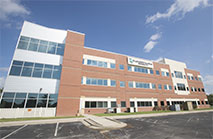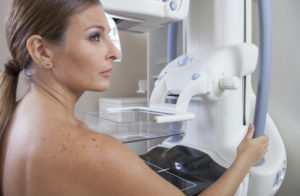Self Exams: Getting It Right
 It’s hard to pat your own self on the back, so let us (virtually) do it for you! You’re taking great care of yourself! Exercising regularly (or at least trying hard, because it can be hard!). Eating well (mostly, with the exception of the occasional BBQ). Getting your annual screening mammograms. And… you are doing your monthly self breast exams too. Right?
It’s hard to pat your own self on the back, so let us (virtually) do it for you! You’re taking great care of yourself! Exercising regularly (or at least trying hard, because it can be hard!). Eating well (mostly, with the exception of the occasional BBQ). Getting your annual screening mammograms. And… you are doing your monthly self breast exams too. Right?
Here’s how to make sure your breast self-exam is done right, just in case you need a refresher…
First off, know thyself! Some women have fibrocystic breasts (naturally lumpy-bumpy), some have lumpy- bumpiness which comes and goes during their cycle, and some have smooth breasts. You have to know what your normal is.
Next, know when to do your exam! Usually about 7-10 days into your cycle is when your breasts are the least sensitive and least lumpy-bumpy. This is a guideline – if it’s easier to remember to do this on a specific day of the month – the 1st, your birthday date, etc- that’s fine too.
Most importantly is the how. How does one do a self exam? By look and by feel. You’ll need a mirror and the pads of your fingers.
There are several major things to be aware of:
- You want to look for changes in skin color and texture. Puckering, dimpling, pulling in of the skin or nipple… these are changes you need to bring to your doctor’s attention.
- After you take a good look in the mirror, you need to use your fingers. Pressure is important because lumps can hide behind tissue – the larger the breast the more pressure you will need to use. Laying down flattens the tissue and may make it easier to feel lumps. Remember to use the pads of your fingers – not your fingernails. The pads of your fingers are more sensitive – and less pokey! Make a pattern to ensure you feel all of your breast tissue – start at the nipple and spiral outward or go all the way up and down, then across. Either works, as long as you don’t miss a spot.
- Make sure you feel the tissue behind your nipple and the tissue around your breasts, especially the armpits – remember in many women breast tissue goes up in that area.
- What are you feeling for? Changes from last month, lumps and bumps. You want to be on the lookout for any lumps that are particularly hard, like “frozen peas.” Hard lumps don’t have to be large to be troublesome. If you feel something new, different or lump-like make an appointment to see your doctor. The next step may be a visit to your local friendly radiologist.
The whole process of a careful breast self-exam only takes a few minutes, but you are the first line of defense in breast health. You know yourself, and your doctor can help. Early detection saves lives!
Image credit: Self-exam reminder by glokbell via Flickr Copyright Creative Commons Attribution 2.0 Generic (CC BY 2.0)
Originally published 8/5/14 on mammographykc.com.





